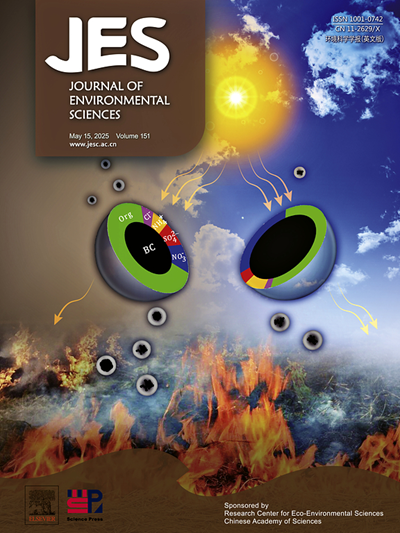Review of research advances in microbial sterilization technologies and applications in the built environment
IF 5.9
2区 环境科学与生态学
Q1 ENVIRONMENTAL SCIENCES
引用次数: 0
Abstract
As globalization accelerates, microbial contamination in the built environment poses a major public health challenge. Especially since Corona Virus Disease 2019 (COVID-19), microbial sterilization technology has become a crucial research area for indoor air pollution control in order to create a hygienic and safe built environment. Based on this, the study reviews sterilization technologies in the built environment, focusing on the principles, efficiency and applicability, revealing advantages and limitations, and summarizing current research advances. Despite the efficacy of single sterilization technologies in specific environments, the corresponding side effects still exist. Thus, this review highlights the efficiency of hybrid sterilization technologies, providing an in-depth understanding of the practical application in the built environment. Also, it presents an outlook on the future direction of sterilization technology, including the development of new methods that are more efficient, energy-saving, and targeted to better address microbial contamination in the complex and changing built environment. Overall, this study provides a clear guide for selecting technologies to handle microbial contamination in different building environments in the future, as well as a scientific basis for developing more effective air quality control strategies.

微生物灭菌技术及其在建筑环境中的应用研究进展综述
随着全球化的加速,建筑环境中的微生物污染对公共卫生构成了重大挑战。特别是自2019冠状病毒病(COVID-19)以来,微生物灭菌技术已成为室内空气污染控制的重要研究领域,以创造卫生安全的建筑环境。在此基础上,对建筑环境中的灭菌技术进行综述,重点阐述了灭菌技术的原理、效率和适用性,揭示了灭菌技术的优势和局限性,并对目前的研究进展进行了总结。尽管单一灭菌技术在特定环境下具有一定的功效,但其副作用仍然存在。因此,这篇综述强调了混合杀菌技术的效率,提供了一个深入了解在建筑环境中的实际应用。展望了未来灭菌技术的发展方向,包括开发更高效、更节能的新方法,以更好地解决复杂多变的建筑环境中的微生物污染问题。总体而言,本研究为未来不同建筑环境中微生物污染处理技术的选择提供了明确的指导,也为制定更有效的空气质量控制策略提供了科学依据。
本文章由计算机程序翻译,如有差异,请以英文原文为准。
求助全文
约1分钟内获得全文
求助全文
来源期刊

Journal of Environmental Sciences-china
环境科学-环境科学
CiteScore
13.70
自引率
0.00%
发文量
6354
审稿时长
2.6 months
期刊介绍:
The Journal of Environmental Sciences is an international journal started in 1989. The journal is devoted to publish original, peer-reviewed research papers on main aspects of environmental sciences, such as environmental chemistry, environmental biology, ecology, geosciences and environmental physics. Appropriate subjects include basic and applied research on atmospheric, terrestrial and aquatic environments, pollution control and abatement technology, conservation of natural resources, environmental health and toxicology. Announcements of international environmental science meetings and other recent information are also included.
 求助内容:
求助内容: 应助结果提醒方式:
应助结果提醒方式:


